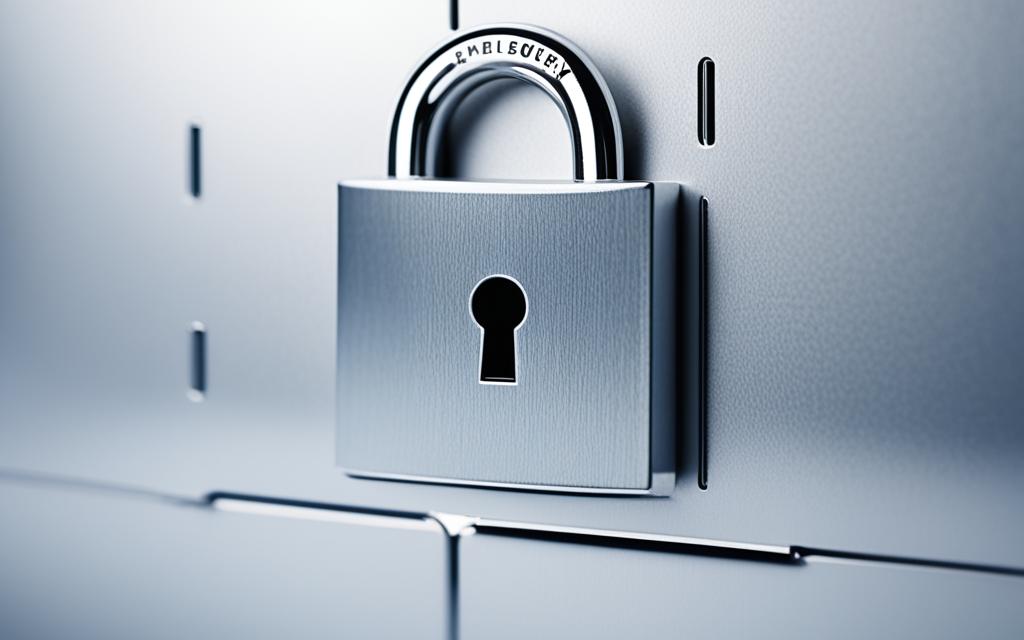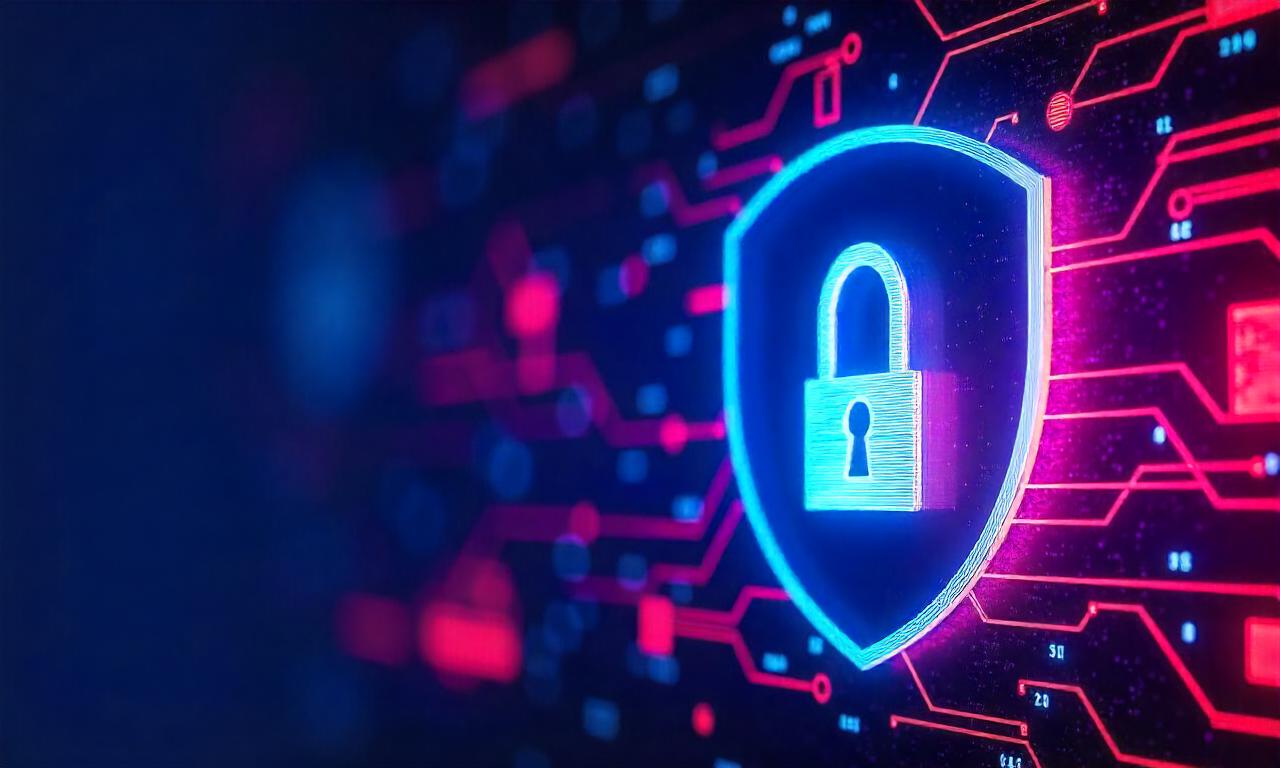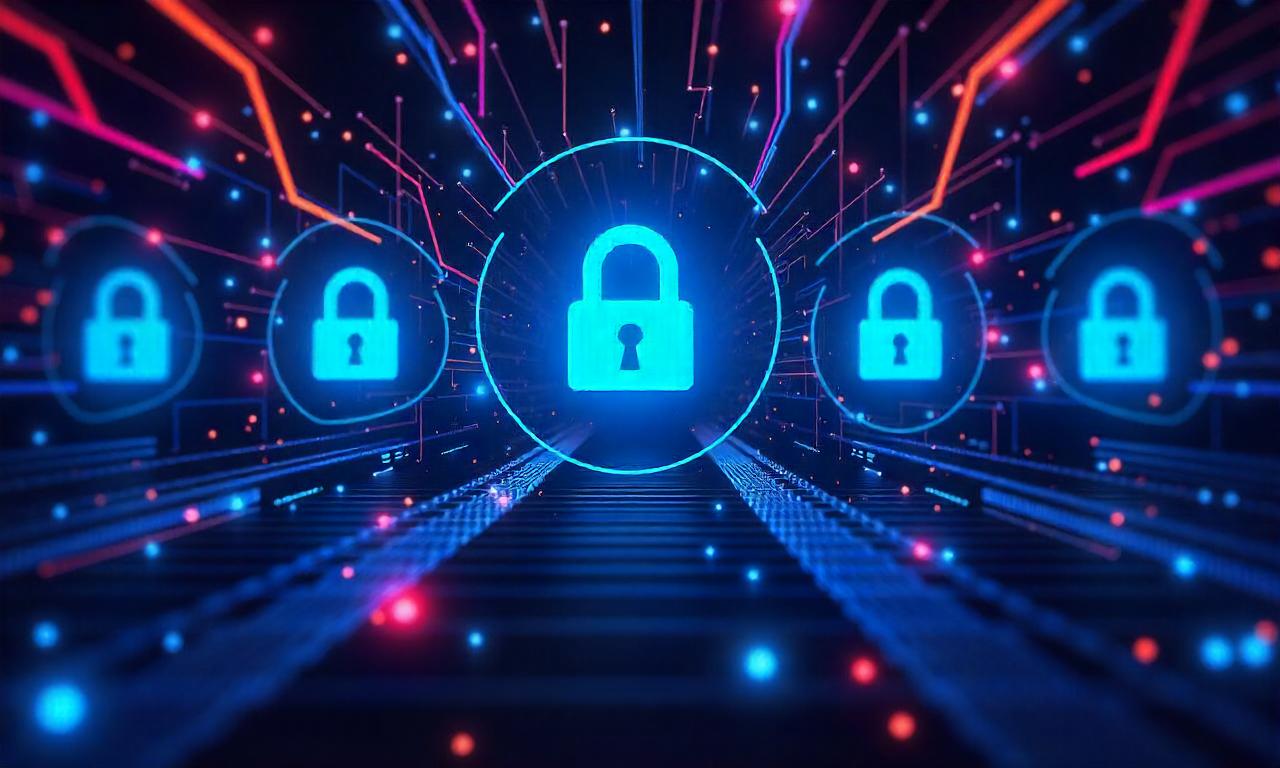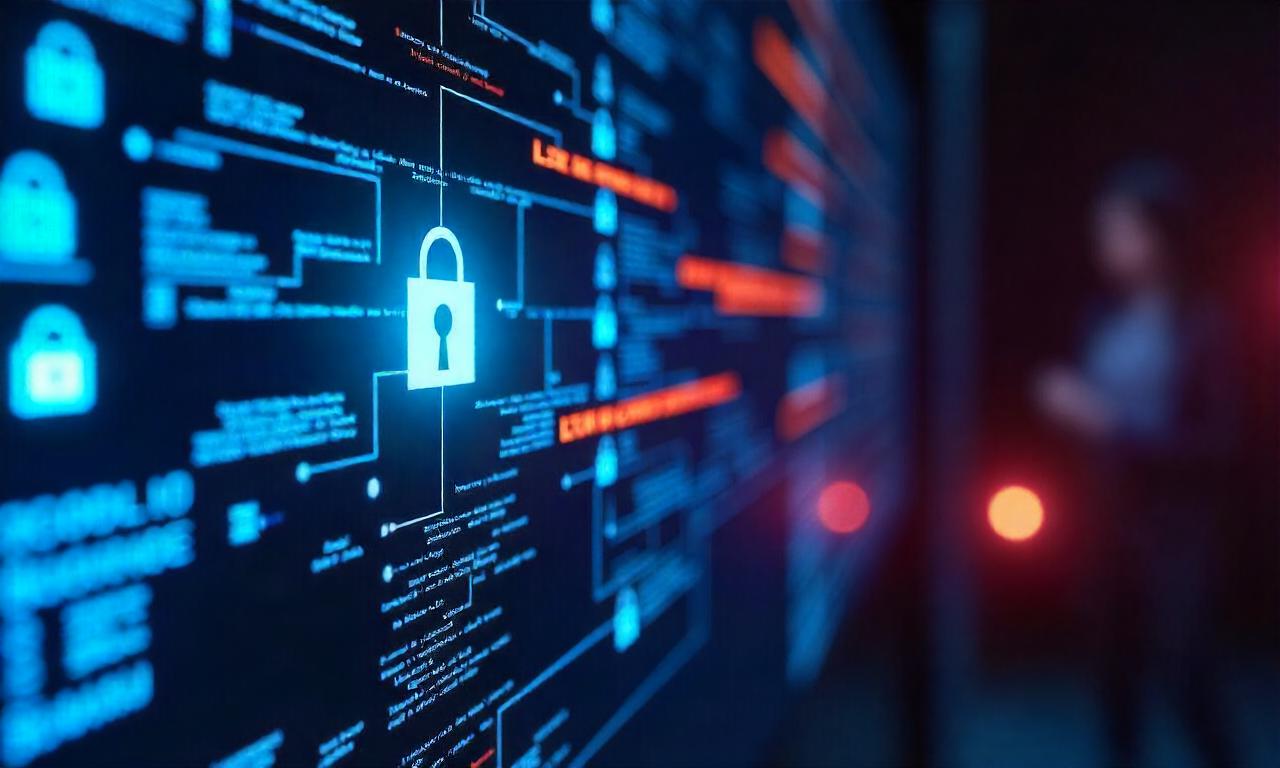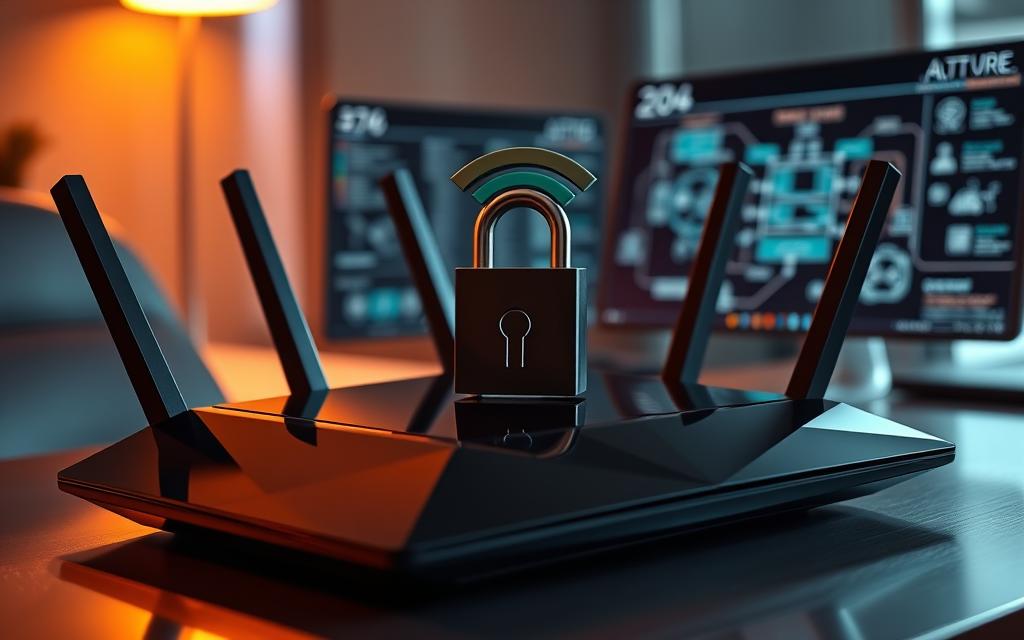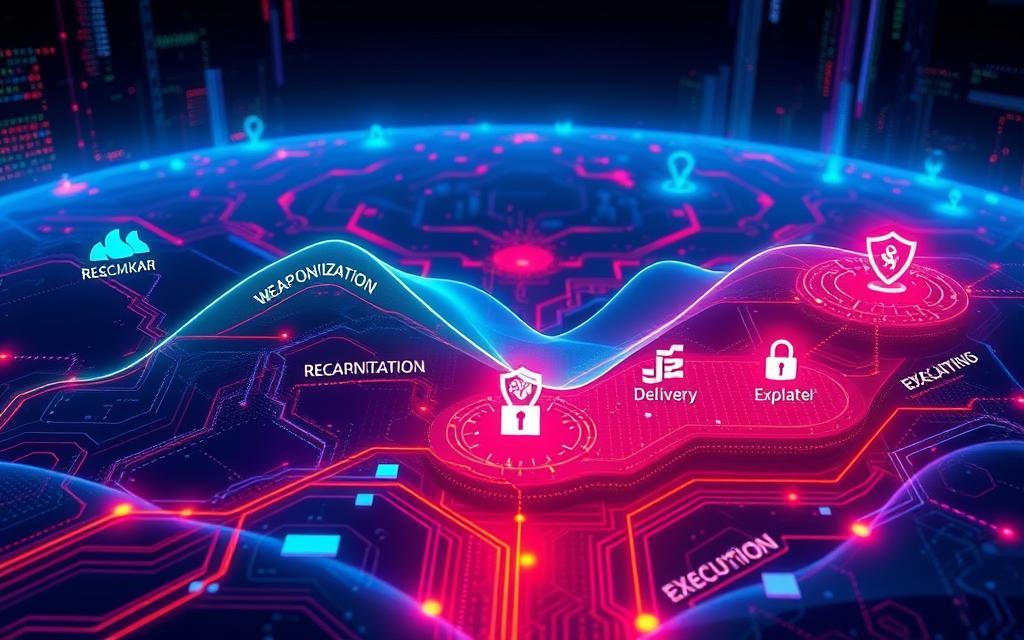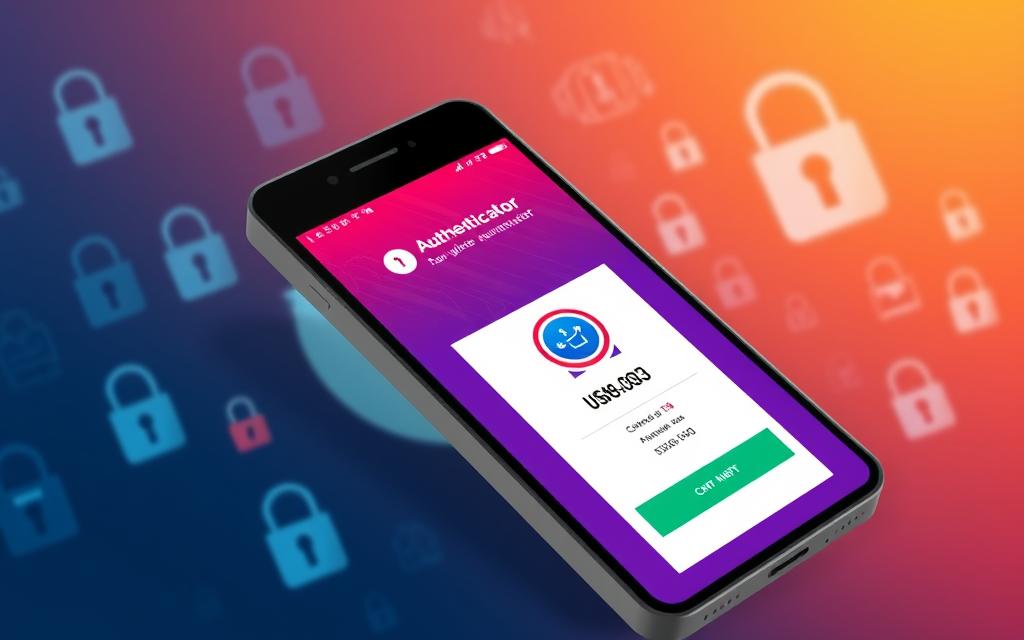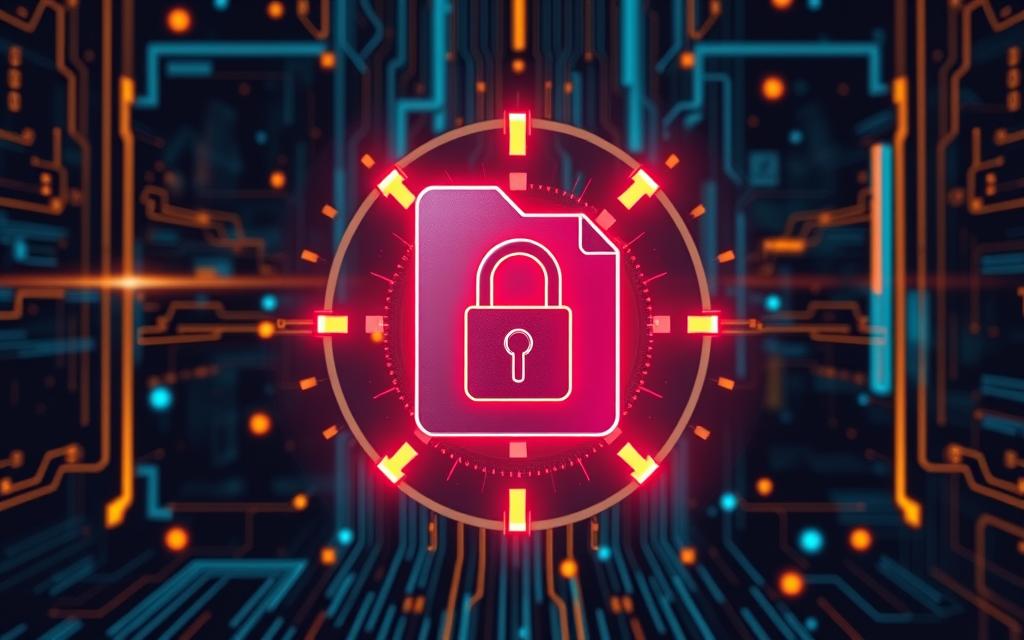Our Gmail accounts hold a lot of private info. From personal photos to important conversations, they’re full of details. But, if not secured, hackers could see it all. The solution is email encryption. This changes our text into a secret code. So, others can’t read it without the right code key. Encrypted messages keep our talks private and safe.
Securing our Gmail with email encryption is key. It keeps our personal details safe. In this guide, we’ll show how to use email encryption on Gmail. This ensures email privacy and total secrecy. We’ll discuss tools that make Gmail even safer. Plus, we’ll talk about what Gmail’s own safety features can and can’t do.
Table of Contents
ToggleUnderstanding Email Encryption
Email encryption is vital for our privacy and security. It turns our messages into code, making sure only the right person can read them. This stops others from seeing emails without permission.
What is Email Encryption?
Email encryption uses special math to turn our messages into unbreakable code. This way, our emails stay secret, whether they’re sitting in our inbox or flying across the web. It makes sure our emails are private.
Types of Email Encryption
There are different kinds of email encryption. Some protect emails in our inbox (at-rest), while others keep them safe as they move through the internet (in-transit). For the strongest protection, use end-to-end encryption. It keeps your emails coded from sending to receiving.
Importance of Email Encryption
Email encryption keeps our private messages safe. It blocks hackers, spies, and stops leaks of important info. People and groups that deal with secret or important data really need email encryption. It protects us and our business from anyone wanting to sneak a look.
Gmail’s Email Encryption Methods
Gmail, a top-notch email service by Google, uses two main encryption types for email safety: Transport Layer Security (TLS) and Secure/Multipurpose Internet Mail Extensions (S/MIME).
Transport Layer Security (TLS)
TLS is Gmail’s basic encryption to shield emails in transit. Messages are encrypted from your device to the intended recipient’s inbox. This guards them from getting caught by the wrong eyes. But, remember, with TLS, Google can still see your messages.
Secure/Multipurpose Internet Mail Extensions (S/MIME)
Gmail doesn’t stop at TLS. It also has S/MIME, which customizes encryption for specific users. With S/MIME, only the receiver can open and read the message. It adds more layers of protection. This is especially useful for businesses that share private data. But, S/MIME is limited to some paid Google Workspace accounts. Both sender and receiver need to activate it.
With TLS and S/MIME, Gmail keeps your email secure and private. It stops unknown access and keeps your sensitive data safe.
how to encrypt email gmail
If you want more email security on Gmail, you have two good choices. You can use S/MIME encryption or Gmail’s Confidential Mode. Both methods will make your emails more secure.
Enabling S/MIME Encryption in Gmail
If you have an Enterprise or Education Fundamentals Google Workspace plan, you can turn on S/MIME encryption. Simply head to the Google Admin console. Then, go to Apps > Google Workspace > Gmail, and check the box for S/MIME encryption. This encryption makes your emails safer from prying eyes, adding another layer of protection.
Using Gmail Confidential Mode
For those without S/MIME, Gmail’s Confidential Mode is a good alternative. It helps avoid sharing important information by mistake. This mode lets you set expiration dates for emails, stop them from being forwarded or downloaded, and even require an SMS passcode for access. Although it’s not full encryption, Confidential Mode does a lot to keep your Gmail messages private and safe.
Best Third-Party Gmail Encryption Tools
If your Gmail security needs a boost, several third-party tools can help. These gmail encryption tools add extra protection. They range from simple security features to complex encryption methods. They make sure your private messages stay safe.
Virtru
Virtru is a handy Chrome extension that works with Gmail. It uses the TDF standard for end-to-end encryption. This means your email and attachments are safe, making sure only your intended receiver sees them. Even if they get forwarded or someone tries to share them.
Mailvelope
Mailvelope is another great choice. It uses PGP encryption to keep your emails secure. With Mailvelope, you can set up and manage your own PGP keys. This gives you more privacy and control over your emails.
Trustifi
Trustifi takes Gmail security to another level. It’s a platform full of advanced security tools. These include AES-256-bit encryption, two-factor authentication, and more. Trustifi is easy to use, letting you quickly secure your Gmail messages.
With tools like Virtru, Mailvelope, and Trustifi, you can make your Gmail safer. They ensure your private emails are protected, even with Gmail as your main service.
Checking Email Encryption Status
It’s important to keep your Gmail emails safe with encryption. To see if an email is secure, open it. Look for an encryption icon by the sender’s name.
A green lock means the email is extra safe with S/MIME. A gray lock shows it’s safe with TLS during transit. But a red lock means it’s not secure and could be seen by others.
If you want to know more about the encryption settings, click on the lock icon. Then, select “View details.” This shows you how your email is protected. It helps you improve your email safety.
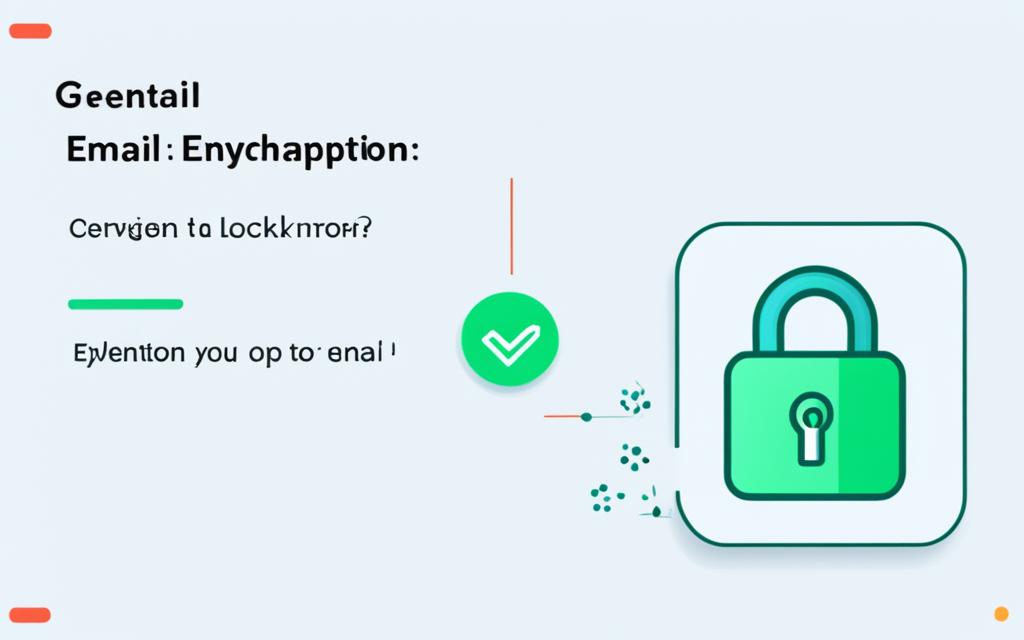
Limitations of Gmail Encryption
Gmail’s encryption methods are quite secure, but they do come with a few limits. The big issue is recipient compatibility with the S/MIME encryption protocol.
The S/MIME protocol is better than Gmail’s standard TLS. But, it only works when both you and the person you’re emailing have it set up. This can make it hard to use when talking to people not in your company.
Limited End-to-End Encryption
Gmail lacks true end-to-end encryption. Even though Gmail encrypts messages while in transit, Google can still access them. So, your emails might not be fully protected from the service provider.
For a more secure option, users might want to look into other email services. They could also explore third-party encryption tools. These often provide better security and more control over who sees your messages.
Email Encryption Best Practices
To boost the safety of your emails on Gmail, it’s wise to stick to some good habits:
Strong Passwords
Choosing strong, unique passwords for your Gmail account is essential. This guards your data from those who shouldn’t have it. Don’t use common words or your personal info. Go for a mix of letters, numbers, and special characters. And remember, it’s smart to change your passwords now and then to keep them safe.
Two-Factor Authentication
Turn on two-factor authentication (2FA) for your Gmail. It means you’ll need more than just a password to get in. For example, a special code sent to your phone. This stops others from getting in, even if they know your password.
Regular Security Updates
Staying up to date on security updates for your devices and software is important. It helps patch up any weaknesses and keeps you safe from new dangers. Always have automatic updates on so you’re running the latest, most secure version.
Gmail Encryption for Businesses
Businesses often deal with private info every day. They need strong email encryption to keep it safe. Luckily, Google Workspace is here to help. It’s a set of tools by Google for better productivity and collaboration. It offers top-notch email encryption for companies who need it.
Google Workspace Subscription
With a Google Workspace subscription like the Enterprise or Education Fundamentals plan, companies get more security. They can use the S/MIME encryption for their Gmail. This encryption keeps emails safe while traveling. Only the right person can see the message.
Compliance and Data Protection
Google Workspace doesn’t just stop at encryption. It also supports many compliance and data protection needs. This is especially useful for companies with strict rules to follow or handle sensitive data. It has features like better security, tools to stop data loss, and helps meet regulations like HIPAA, GDPR, and FINRA.
Using Google Workspace’s advanced encryption and compliance features makes business communication secure. It lets companies talk safely to clients, partners, and staff. This way, critical data stays protected, even online.
Alternatives to Gmail for Secure Email
While Gmail has good encryption, some users want more secure email services. ProtonMail and Tutanota are great options for those that value security and privacy.
ProtonMail
ProtonMail comes from Switzerland and uses powerful end-to-end encryption. This means only you and your recipient can see your emails. It was created by CERN scientists and uses a zero-access design. This stops even ProtonMail from seeing your data, making it perfect for anyone who needs ultimate privacy.
Tutanota
Tutanota, based in Germany, is another top choice for secure email. It uses end-to-end encryption too, keeping your messages safe from start to finish. Plus, they give you an encrypted calendar and secure storage options. It’s a full suite for anyone who wants a more private email service than Gmail offers.
Both ProtonMail and Tutanota are easy to use and put privacy first. They’re ideal for users or businesses who want the best email security. Their features go beyond what Gmail gives, ensuring your data stays private.
Conclusion
Encrypting your emails in Gmail is crucial for keeping your private info safe. With Gmail’s built-in encryption and tools like Virtru, your messages stay secure. This keeps them safe from anyone without permission to access.
It’s smart to use strong passwords and have two-factor authentication on. Also, make sure to keep your software updated. Doing these things makes your Gmail even more secure.
For companies needing extra email encryption, a Google Workspace subscription is a good choice. It offers high protection and follows important rules for email safety.
With these steps, using Gmail feels safer. Keeping our email secure is very important now. With so many ways to encrypt our emails, we can stop others from seeing our private info.
FAQ
What is email encryption?
Email encryption turns your message into a secret code. Only the person you send it to can read it. This protects the privacy of your emails.
What are the different types of email encryption?
There are three main email encryption types. At-rest keeps emails safe in your inbox. In-transit does the same while emails move between servers. End-to-end makes sure emails stay coded until they reach the receiver.
Why is email encryption important?
Email encryption keeps your important messages safe from prying eyes. It stops others from reading your private information. This is especially critical for protecting business emails.
What encryption protocols does Gmail use?
Gmail relies on two encryption methods. TLS guards emails as they move between servers. S/MIME ensures only the email’s intended reader can decode it.
How do I enable S/MIME encryption in Gmail?
For S/MIME in Gmail, you need to be a Google Workspace subscriber. Choose Enterprise or Education Fundamentals. Then, in the Google Admin console, set up S/MIME for sending and receiving.
What is Gmail Confidential Mode?
Gmail’s Confidential Mode adds extra security to your emails. It lets you set time limits on viewing, prevent sharing, and require a passcode. Although not full encryption, it helps keep important info private.
What third-party tools can I use to encrypt my Gmail emails?
For extra email security with Gmail, you can use tools like Virtru for end-to-end encryption. Mailvelope is another option, using the PGP protocol. Trustifi is a trusted cloud platform for advanced email security.
How can I check the encryption status of emails in Gmail?
To see email encryption in Gmail, look for the lock icon next to the sender’s name. A green lock means it’s extra secure with S/MIME. A gray lock shows standard TLS encryption. A red lock means it’s not encrypted.
What are the limitations of Gmail’s encryption methods?
Gmail’s encryption has some restrictions. Both you and the email’s receiver must have S/MIME enabled. Plus, it’s not true end-to-end encryption. Google can still access the content of your messages.
What best practices can I follow to enhance the security of my Gmail emails?
Secure your Gmail by using strong, unique passwords. Turn on two-factor authentication. Always update your devices and software for the latest security.
How can businesses benefit from Gmail encryption features?
Businesses wanting better email security might choose Google Workspace. It offers S/MIME and more compliance features. This ensures the safety of business communications.
What are some alternative email services that prioritize security and privacy?
For the highest email security, consider ProtonMail and Tutanota. They offer the best encryption and privacy measures. Perfect for anyone needing top confidentiality for their emails.

